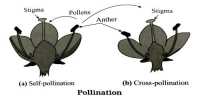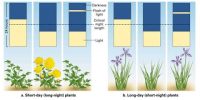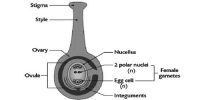The epidermal tissue system forms the outer most covering of the whole plant body and comprises epidermal cells, stomata and the epidermal appendages the trichomes and hairs. The epidermis is the outermost layer of the primary plant body.
It is made up of elongated, compactly arranged cells, which form a continuous layer. The epidermis is usually single-layered. Epidermal cells are parenchymatous with a small amount of cytoplasm lining the cell wall and a large vacuole. The outside of the epidermis is often covered with a waxy thick layer called the cuticle which prevents the loss of water. The cuticle is absent in roots.
Stomata are structures present in the epidermis of leaves. Stomata regulate the process of transpiration and gaseous exchange. Each stoma is composed of two bean-shaped cells known as guard cells. In grasses, the guard cells are dumb-bell shaped. The outer walls of guard cells (away from the stomatal pore) are thin and the inner walls (towards the stomatal pore) are highly thickened. The guard cells possess chloroplasts and regulate the opening and closing of stomata. Sometimes, a few epidermal cells, in the vicinity of the guard cells become specialized in their shape and site and are known as subsidiary cells. The stomatal aperture, guard cells and the surrounding subsidiary cells are together called stomatal apparatus (Figure).

Figure: Diagrammatic representation: (a) stomata with bean-shaped guard cells (b) stomata with dumb-bell shaped guard cell
The cells of epidermis bear a number of hairs. The root hairs are unicellular elongations of the epidermal cells and help absorb water and minerals from the soil. On the stem, the epidermal hairs are called trichomes. The trichomes in the shoot system are usually multicellular. They may be branched or unbranched and soft or stiff. They may even be secretory. The trichomes help in preventing water loss due to transpiration.














